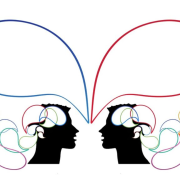
Maladaptive daydreaming is a common psychiatric condition. This condition can cause some harmful symptoms and distract a person from living their everyday life. A lot of times, this condition is triggered due to a real-life incident. Some of these events include:
- Smells, noises, and other sensory stimuli
- Conversation topics
- Physical experiences
As there is no treatment for this disorder available yet, it is not classified in (DSM-V) Diagnostic and Statistical Manual of Mental Disorders. But many people believe that this is a real disorder that can affect the daily life of a person. So, let’s find out more about maladaptive daydreaming in this article.
What Is Maladaptive Daydreaming?
Before anything else, you need to find out what is maladaptive daydreaming. Daydreaming is a wakeful indulgence sensation in thoughts that is not related to the activity or surroundings of the person. Mostly, these thoughts are pleasant as people fantasize about achieving their goals, experiencing desired activities, and others.
According to experts, this condition might be a brain collection product known as the default mode network. A part of the cortex can demonstrate consistent activity patterns when the brain is at rest otherwise. In short, this network witnesses the highest activity when the brain is not occupied elsewhere.
Let’s find out some other details about this disorder to help you understand it better.
Maladaptive Daydreaming Symptoms
The first step of finding out that you have a maladaptive daydreaming disorder is by detecting the symptoms. Pointing out the symptoms will help you get done with the diagnosis of this disorder and start with treatments. However, the number of symptoms might not be as high as you expect. Here are some of the common symptoms that you can get include:
- Real-life events triggering maladaptive daydreaming
- Highly vivid daydreams with imaginary characters, plots, settings, and others. It feels like a story-like circumstances
- Difficulty sleeping
- Everyday tasks become more challenging
- Repetitive movements while sleeping
- The overwhelming desire to daydream
- Talking and whispering while daydreaming
- Frequent facial expressions during daydreams
- Daydreaming for a very long time
- Insomnia
These are some common symptoms that you might develop due to maladaptive daydreaming. However, the symptoms can vary from person to person. It might become mild to severe based on different factors. Compared to this one, maladaptive daydreaming ADHD have a lot of other symptoms.
So, you need to be very aware of the symptoms and visit the doctor in case any of them is happening to you. After finding out the maladaptive daydreaming symptoms, let’s jump to the next section.
Maladaptive Daydreaming Causes
It is very important to find out what causes maladaptive daydreaming. Mainly, it is caused due to mental trauma, loneliness, abuse, and other reasons. It is a coping mechanism that starts to respond in case of any of the above conditions.
It can also show up if someone is lonely and helpless in life. For a while, they start living in the imaginary world that they created to escape from reality. Maladaptive daydreaming helps them achieve or complete any task that they cannot complete in real life.
Identify Maladaptive Daydreaming Scale And Test
Maladaptive daydreaming is a symptom of many other diseases. So, you will need to use the diagnostic test and scale to gauge abnormal fantasizing. The maladaptive daydreaming scale comes with statements to compare it with the presence of ADHD, OCD, dissociative disorder, general anxiety, and others.
The five major characteristics of the maladaptive daydreaming scale test include:
- Distress amount caused by maladaptive daydreaming
- Quality and content of the dreams
- The ability of individuals to compulsion or control the dreams
- The severity of daydreaming and the ability of the individuals to perform their daily activities
- Perceived benefits to an individual due to daydreaming
Maladaptive Daydreaming Diagnosis
Now that you know the maladaptive daydreaming definition, let’s find out how to diagnose this condition. Unfortunately, there is no universal method available that is used to diagnose maladaptive daydreaming.
Although the scale can help us find out if someone is experiencing daydreaming, there are still no ways to diagnose it. One of the common questions that you can find on online platforms is how to stop maladaptive daydreaming Reddit.
We will get to find out the available treatments, but first, take a look at the effects of this disorder:
Maladaptive Daydreaming Effects
Although it is very rare for people to develop different effects due to maladaptive daydreaming, it is not impossible. There are some people who experience some other effects, such as:
- Depression
- ADHD (Attention Deficit Hyperactivity Disorder)
- OCD (Obsessive-Compulsive Disorder)
Now, let’s find out how to stop maladaptive daydreaming and get relief from the condition.
Is Maladaptive Daydreaming Rare or Common?
The term maladaptive daydreaming is not very common among regular people. So you can address these issues uncommonly. Commonly there are many types of research that are going to find the issues. According to the researchers, 20% of adults with ADHD suffer from this issue. Now almost 2.2 million adults with ADHD are facing this problem.
People who are experiencing maladaptive daydreaming struggle with negative feelings. These negative feelings are seriously damaging any type of regularly scheduled work. The people who are suffering from maladaptive daydreaming are not feeling good about their daily scheduled work. According to many medical researchers, maladaptive daydreaming is similar to any type of addiction.
Maladaptive Daydreaming Treatments
By now, you already know the maladaptive daydreaming meaning, but you need to know how to get rid of the condition or the symptoms. Unfortunately, as mentioned above, there is no official treatment available for maladaptive daydreaming as of yet. However, there are some techniques that are used in most cases to help manage the symptoms. Here are some of those techniques given below.
- Try therapies to identify what is causing the triggers. It will also help you to know the underlying causes. One such therapy is cognitive-behavioral therapy.
- Be aware of the symptoms of maladaptive daydreaming and let others know to stay one step ahead. It will help you to stop daydreams in the early stages. You will be able to interrupt the maladaptive daydreaming and get relief from the symptoms. This is the most common advice that you can find on maladaptive daydreaming Reddit.
- Locate all the triggers and stimuli that trigger the maladaptive daydreaming by keeping a diary with you. It will help you to avoid such moments or activities to keep the daydream away.
- Another common treatment that comes to the rescue in almost all severe maladaptive daydreamings and it’s stories is medications. The number of severe cases of maladaptive daydreaming might be below, but you will need to take the help of fluvoxamine. It can help you to get temporary out of all harmful symptoms.
- Last but not least, reduce your fatigue by increasing your sleeping time or quality. Also, you can choose some stimulants like caffeine and others to combat tiredness in the day. It is very effective to keep the maladaptive daydreaming away.
Facts about maladaptive daydreaming
Here are some intriguing facts about this captivating yet challenging aspect of the human imagination:
1. Immersive Fantasy Worlds: People with maladaptive daydreaming often create intricate and detailed fantasy worlds within their minds. These worlds may have characters, plots, and settings that are as vivid as reality.
2. Time-Consuming Habit: Unlike ordinary daydreaming, maladaptive daydreaming can be time-consuming. Individuals may spend hours lost in their daydreams, impacting their ability to focus on real-life responsibilities.
3. Emotional Connection: Daydreamers may form deep emotional connections with the characters and scenarios in their fantasies. The emotional impact can be so intense that it affects their mood and well-being.
4. Triggers and Themes: Certain triggers, such as music, movies, or specific environments, can initiate and intensify maladaptive daydreaming episodes. Themes within daydreams often reflect unmet needs or desires.
5. Prevalence and Recognition: While not yet officially recognized as a mental health disorder, maladaptive daydreaming has gained acknowledgment within online communities. Many individuals share their experiences, seeking understanding and support.
6. Impact on Daily Functioning: Maladaptive daydreaming can interfere with daily functioning, affecting work, relationships, and overall productivity. Striking a balance between imagination and reality becomes a crucial challenge.
7. Similarities to Obsessive-Compulsive Traits: Some individuals with maladaptive daydreaming may exhibit obsessive-compulsive traits, such as repetitive movements or gestures while daydreaming.
8. Treatment Challenges: Due to its relatively recent recognition, there is limited research on effective treatments for maladaptive daydreaming. Therapeutic approaches may include cognitive-behavioral techniques and mindfulness.
Understanding maladaptive daydreaming is a complex journey, shedding light on the intricate ways the mind copes with unmet needs and desires. While it brings a sense of wonder, it also poses challenges that individuals and mental health professionals navigate together.
Frequently Asked Questions
As for now, there is no treatment available yet for maladaptive daydreaming. However, a study shows fluvoxamine, also known as Luvox, is effective for maladaptive daydreaming. It helps to control daydreams and is used as a common treatment for this disease in OCD.
According to experts, maladaptive daydreaming is caused due to the coping mechanism that is a common response to abuse, trauma, loneliness, and others. It causes the victims to create an imaginary world to escape in times of loneliness and distress.
People diagnosed with this condition often face some of the common symptoms, including general anxiety, depression, dissociation, and social anxiety. In addition, they might also develop some other symptoms, such as obsessive-compulsive disorder, depression, and hyperactivity disorders.
Yes, most daydreamers have a hard time sleeping as they have trouble turning off a part of their brain that is linked to the wandering mind. Based on the new study, it can put them at high risk of insomnia.
Many people might not consider maladaptive daydreaming issues to be serious. However, it is. This condition can cause distress in the lives of the individuals who are suffering from it. This infamous disorder can make it impossible for those struggling to live or function properly in their lives.
Regular people daydreaming and maladaptive daydreaming are entirely different. There are certain areas where people are suffering from Alzheimer’s disease. Researchers often say that healthy people are using the brain’s younger parts for daydreaming. But the way people are using their brains is leading to Alzheimer’s disease
Conclusion
If you have the question, “is maladaptive daydreaming a mental illness,” then you can go through all the different sections mentioned above. It will help you know all the details like symptoms, effects, causes, treatment, and other details.
It is one of the most common conditions that can cause interruptions in your daily life. If there is any presence of the symptoms of this disorder, it is better to visit a doctor as soon as possible.
Read Also:











